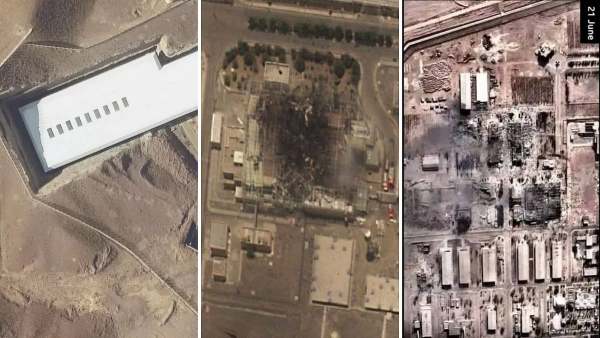
Washington: In a controversial military intervention, the United States on Sunday, June 22, launched precision strikes on Iran’s three most critical nuclear facilities, Fordow, Natanz, and Isfahan, marking its first direct involvement in the escalating Israel-Iran conflict. The strikes, ordered by President Donald Trump, represent a major escalation and have reignited fears of a wider Middle East war.Trump confirmed the attack via a Truth Social post, calling it a "very successful attack" and adding that a full payload of bombs was dropped on Fordow. He praised the American military, saying, "There is not another military in the World that could have done this... NOW IS THE TIME FOR PEACE!"Here’s a closer look at the three key sites and why they matter so deeply to Iran's nuclear ambitions:Fordow: Iran’s Deepest and Most Fortified Enrichment FacilityFordow isn’t just another nuclear site, it’s the one Iran buried under a mountain, both literally and politically. Located around 100 km from Tehran, this facility was once so secret that the world only found out about it after Western intelligence agencies blew the lid off in 2009.Built to house thousands of uranium-enriching centrifuges, Fordow was designed to survive a direct attack, which is why it’s protected by advanced air defences and carved into rock. Under the 2015 nuclear deal, its activities were meant to be curbed. But after Trump pulled out of the agreement in 2018, Iran ramped enrichment back up. Today, nearly 2,000 centrifuges, including high-performance IR-6 models, spin here, churning out 60% enriched uranium. It’s one of the most secure parts of Iran’s nuclear programme, and that’s exactly why it was targeted.Natanz: The 'Crown Jewel' Already Scarred by Israeli StrikesNatanz has been at the centre of global concern for years. Known as the “crown jewel” of Iran’s uranium enrichment, it lies 220 km southeast of Tehran and houses over 50,000 centrifuges. Some of them are buried underground, making it harder to destroy, but not impossible.Israel had already taken a swing at Natanz earlier this week, destroying the aboveground section. According to the IAEA, the damage was extensive but contained. Even so, Natanz remains a symbol of Iran’s enrichment capabilities, and the US strikes only reinforced efforts to dismantle it.Isfahan: Research and Uranium Conversion HubLess talked about, but no less important, is the Isfahan nuclear facility, a sprawling complex located around 350 km from Tehran. It’s Iran’s research and development hub, employing over 3,000 scientists and housing Chinese-built reactors, labs, and a uranium conversion plant.This is where raw uranium begins its transformation into nuclear fuel. Striking Isfahan wasn’t just about infrastructure, it was a message. Iran’s technical brainpower and scientific base are just as critical as its centrifuges, and the US made sure that message landed.Together, these three sites form the backbone of Iran’s nuclear programme. By targeting all of them in one coordinated strike, the US hasn’t just escalated a conflict, it’s taken aim at the core of Iran’s atomic future.
-
Watch: Angry Rishabh Pant Throws Ball In Frustration At Umpire's Decision

-
Slowdown Hits Real Estate: Major Indian Cities Report Sharp Drop in Home Sales

-
Air India Crash Triggers Price Hikes: Passengers Face Soaring Fares Amid Widespread Cancellations

-
Riteish Deshmukh’s Video Denying Fan A Selfie Goes Viral, Internet Calls Him ‘Rude’; WATCH

-
Outrage Erupts As Rapper Tommy Genesis Dresses As Hindu Goddess, Licks Cross In Viral Video
